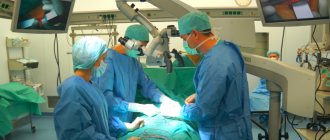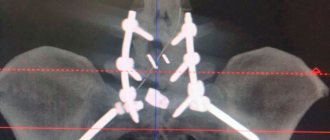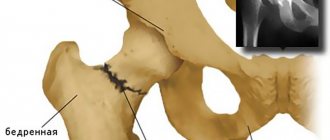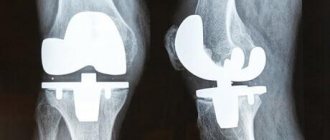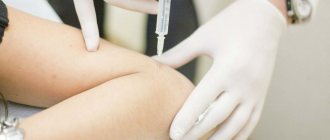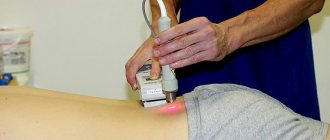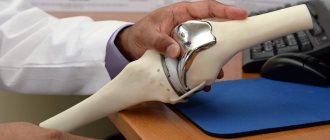An orthosis is a medical device designed to immobilize an injured area of the body.
Elbow orthoses are used for injuries to the elbow joint or forearm bones. In cases of injury, in the postoperative period, with its help, the limb is fixed in the anatomically correct position, necessary for treatment and rehabilitation. The resorption of edema and hematomas is accelerated, which leads to a decrease or complete cessation of pain. For the purpose of prevention, orthoses are used in sports, work, everyday life, and for chronic diseases that threaten the integrity or normal functioning of the joint. Regular wearing of the product reduces the load on the elbow joint area, protects against damage and exposure to traumatic factors.
Types and purposes of orthoses for the elbow joint
Depending on the degree of rigidity and material of manufacture, they are divided into 3 groups:
Supportive, soft models (bandages).
Made from dense elastic fabric. The joint is fixed using compression. The special texture and composition of the material have micromassage, warming, and decongestant effects. Used for minor injuries of the elbow joint (dislocations), damage to the ligamentous-muscular system (sprains, tears of ligaments, tendons), swelling. The preventive effect of the bandage is to hold the tissues of the arm in a physiological position during regular loads (weight lifting), microtraumas (sports training), and inflammation.
Products of medium hardness.
They are based on polymer fabric (polyurethane, spandex, nylon), which protects the orthosis on the outside from contamination and prevents deformation. The inner layer is made of cotton materials, comfortable for prolonged contact with the skin. Medium-stiffness orthoses often involve the presence of stiffening ribs, which eliminate pathological movements in the joint or set a certain range of movements. Indications for use: severe injuries to the elbow joints, ligament ruptures, postoperative rehabilitation.
Rigid orthoses
. Used as an alternative to a plaster cast. They are a combination of plastic and fabric parts. Equipped with stiffening ribs, clamps, and hinges that ensure complete immobilization of the arm. The straps support the forearm in a horizontal, stationary position. A Velcro fastener tightly fits the patient's torso and secures the shoulder. Such orthoses are used for fractures of joints and bones, after surgical treatment, if it is necessary to completely restrict movements, excluding displacement of bone fragments.
One of the varieties of rigid models is the ORDEKT elbow orthosis made of low-temperature plastic. This product is formed in the form of a sleeve of the required shape at a right angle. The main advantage is the possibility of individual modeling for each patient, taking into account anatomical and physiological characteristics.
The application occurs in several stages:
- The product must be heated in a container of hot water or in a water bath. Already at temperatures above 65C, plastic acquires the necessary elasticity.
- After softening, place it on a towel and blot off excess water (moderate pressing and stroking movements). In this case, the temperature of the orthosis will drop to 40 ºС and the product will be ready for installation on the injured limb.
- Fix the product on the limb, stretching it as necessary over wider areas of the arm. Fasten the zippers and wait for the orthosis to cool completely.
Prices
The cost of endoprosthetics can vary from 5 to 30 thousand euros. This parameter is influenced by several factors:
- Brand;
- Model;
- Difficulty of work;
- Use of additional rehabilitation means.
It is clear that it is not worth saving on such moments, because... this can lead to loss of motor ability of the limb. However, you can choose a medical center where the pricing policy is more loyal, and the quality of the doctor’s work will meet European standards. Among all European countries, the Czech Republic offers the most optimal conditions. It is here that you can install the highest quality endoprosthesis at the best prices.
What is the difference between a bandage and an orthosis?
Nothing. A bandage is a type of orthosis. It is made of dense elastic fabric. The basis of the product is polyurethane, spandex, nylon, which create compression on the joint capsule. The bandage has an elastic base, which can be made of cotton or other material. It ensures a comfortable skin condition during prolonged contact.
Its purpose:
- stabilization of the joint due to compression;
- warming and micromassage of the joint capsule is carried out;
- swelling is relieved;
- the tissues of the hand are held in a physiological position.
An orthosis is a product that contains inserts of stiffening ribs, plastic or metal inserts that allow a certain amplitude and trajectory of movement.
There is a division into light, medium and hard forms.
Rigid orthoses can completely immobilize the elbow. Some models are made of low-temperature plastic. Before installation, it is heated in water and the position is fixed, taking into account all anatomical features. After hardening in the correct form, it completely eliminates joint movement. They are a convenient alternative to plaster.
The orthosis is used for:
- fractures of the forearm bones in the upper third;
- dislocations;
- after operations and rupture of tendons or ligaments;
- inflammatory diseases of the joint capsule.
Contraindications
Before performing an intervention, it is necessary to exclude a number of contraindications to osteosynthesis. Among the key ones are:
- shock or coma, excessive blood loss, disseminated intravascular coagulation syndrome;
- acute infectious or inflammatory processes, fever of unknown origin;
- exacerbation of chronic pathologies;
- problems with blood clotting;
- skin lesions, extensive crush wounds over the fracture zone;
- severe osteoporosis of bones.
The doctor can also determine a number of temporary contraindications, including in relation to the type of anesthesia used.
Indications for use
It is used both for conservative and after surgical treatment, in cases where immobilization is required. The doctor determines the indications:
- intra-articular fractures in the elbow joint;
- fractures of the epicondyles of the distal humerus without displacement;
- dislocations;
- fractures of the forearm bones at the level of the middle and upper third;
- rehabilitation period after endoprosthetics or arthrolysis of the elbow joint;
- treatment of degenerative and inflammatory joint diseases.
Types of endoprostheses
Models of elbow joint endoprostheses
There are two types of endoprostheses:
- Articulated;
- Unarticulated.
In addition to them, design options such as “partially articulated” are also possible. There are also two categories based on installation method:
- Total;
- Partial.
Articulated models are a ready-made connection that can replace a damaged joint. Unarticulated ones replace only one bone or part of it. Total forms are designed to completely replace a joint, including two or all three components involved in the articulation. Partial ones imply installation in conjunction with native structures.
In modern medicine, specialists rarely establish total models and try to make do with partial ones. But if, during the examination, pathologies are discovered in the patient, in which installation of only a section of the articulation can lead to serious problems, then the total type is used.
How it works
As the plastic hardens, it acquires the necessary rigidity and strength. The product completely follows the contours of the limb. There are no empty spaces or areas of excess pressure. Thanks to this, the elbow joint and bones are in a stationary state, while the patient freely performs any usual movements with the shoulder and fingers.
When heated, the product is fixed with slight tension, which creates the necessary compression on soft tissues. Such an orthosis completely eliminates the mobility of bone fragments, but does not limit hematopoiesis and innervation. Thereby making the period of treatment and rehabilitation faster and more comfortable.
Operation description
The implant is made before the start of surgical procedures. To obtain accurate dimensions, measurements are taken using diagnostic equipment.
Endoprosthesis replacement is performed under endotracheal anesthesia. The patient is in a horizontal position, face down. The limb with the affected joint is moved to the side. A tourniquet is placed on the arm between the shoulder and elbow to reduce blood loss. An incision is made along the back of the joint. The nerve is separated and secured using a holder. The tendons and fascia are cut.
The specialist then finds the olecranon process, performs an osteotomy, and then removes both it and the resulting debris. After this, the bone canals are opened. Now the doctor tries on the prosthesis templates. They should not only fit in size, but also open up all the possibilities regarding the movement of the hand. If the templates fully correspond to their own dimensions, then the actual endoprosthesis is installed.
The plug-in connection is secured with cementless and cement fixation. The ulnar nerve is closed from the metal structure and fixed in a separate channel. This is necessary to avoid injury. When suturing, a drainage tube is brought to the surface. After the operation is completed, the patient’s arm is extended and a soft retaining bandage is applied. The patient must remain in this position for at least five days.
Wearing and care
There are no restrictions on long-term use of the orthosis. 24-hour wearing is indicated throughout the entire treatment period. ORDEKT thermoplastic has shape memory. This means that if during operation there is a need to remove the orthosis (after swelling subsides or the fullness of the arm changes), it can easily be remodeled by reheating it in hot water. Attention! Application, removal, and correction of the orthosis should only be carried out by a doctor.
ORTHOPEDIST-TRAUMOTOLOGIST
Possible complications
Like any intervention, installation of a prosthesis can lead to a number of complications.
So, if there are infectious foci in the body, they can provoke the development of inflammation in the tissues that took part in the procedure. Infection from the outside is practically excluded, because All instruments undergo thorough sterilization, but this risk is always present. Previous operations of this kind fall into the category of information that must be disclosed if any other surgical treatment is planned. Its complexity is not important here; it could even be a simple tooth extraction or filling. Ideally, it is better to avoid such exposures for one year after installation of the endoprosthesis. And in the next two years, before each surgical intervention, additional antibacterial treatment is required.
It is also worth highlighting more specific problems:
- Osteolysis is the destruction of tissue in contact with the implant. It can be caused by osteoporosis, metastases in the bone cavities, rheumatoid arthritis and a number of other diseases associated with metabolic disorders and autoimmune factors and infections.
- Fractures of the prosthesis. This can happen for a number of reasons. For example, a repeated fracture, implants that do not match the anatomical dimensions, or the shelf life of the implant has expired (10-20 years). Size differences are possible if the template is measured incorrectly, which is extremely rare. Most often, the prosthesis breaks due to irrational actions of its owner - he greatly exceeded the permissible load, had an accident, etc.
Clinics in Europe use prostheses with an extended service life, so most often one implant is installed for life.
Why choose an elbow brace made of low-temperature plastic
Advantages of ORDEKT products over traditional orthoses and plaster casts:
- Ease and speed of modeling, correction, removal.
- Provides a tight fit without additional padding in places of natural curves.
- Durable, lightweight design, retains its shape for a long time, does not stretch or crack.
- Suitable for adults and children. You can select the required size by checking the size chart.
- Hypoallergenic thermoplastic and perforation provide wearing comfort and prevent irritation, bedsores, and abrasions.
- Allows the patient to perform hygienic water procedures, swim in the pool, the sea.
- It is easy to care for, invisible under clothes, has a small thickness, and looks neat.
- When removing the orthosis, the hair is not affected, and the patient does not experience any discomfort.
- Affordable price.
You can learn more about orthoses and view the range of all types of orthopedic products made from low-temperature plastic on our website. To get specialist advice, call 8 800 500 8333 or write a message online in the feedback form.
The article was checked by Strakhov Maxim Alekseevich - Candidate of Medical Sciences, Associate Professor of the Department of Traumatology-Orthopedics and Military Field Surgery of the Federal State Autonomous Educational Institution of Higher Education Russian National Research Medical University named after. N.I. Pirogov of the Ministry of Health of Russia, Associate Professor of the Department of Traumatology and Orthopedics of the Federal State Budgetary Institution Federal Scientific and Clinical Center of the Federal Medical and Biological Agency of Russia (Moscow).
Rehabilitation period
In order for recovery to be as fast and complete as possible, it is necessary to follow a number of doctor’s recommendations after surgery. Immediately after the procedure is completed, the operated patient’s arm is placed on a pillow, moving to the side. No immobilization with plaster is used. Drains can be removed from the wound after two days. After examination by a doctor, the patient is recommended to engage in physical therapy, but without bending the limb at the elbow joint. The doctor controls the movements and shows the necessary exercises. After removing the sutures, for 10-14 days, movements of the entire arm are allowed - active and passive in the joint area. X-ray monitoring is periodically performed to assess the condition of bone tissue. Heavy and forced loads are limited for a period of at least three months.
The clinic performs all types of osteosynthesis in the elbow joint. Experienced traumatologists will help with fresh and even old injuries, developing an individual course of treatment. It is possible to undergo all stages of treatment in the clinic, including rehabilitation. To schedule a consultation and clarify details, you can use the call center phone number or the form on the website.
